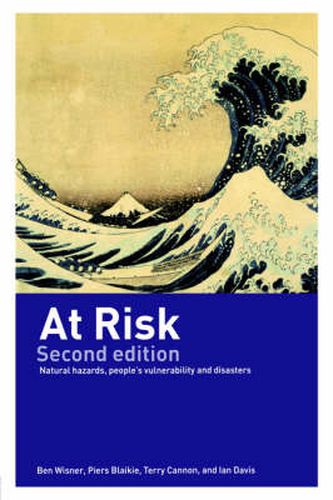Readings Newsletter
Become a Readings Member to make your shopping experience even easier.
Sign in or sign up for free!
You’re not far away from qualifying for FREE standard shipping within Australia
You’ve qualified for FREE standard shipping within Australia
The cart is loading…






The term ‘natural disaster’ is often used to refer to natural events such as earthquakes, hurricanes or floods. However, the phrase ‘natural disaster’ suggests an uncritical acceptance of a deeply engrained ideological and cultural myth. At Risk questions this myth and argues that extreme natural events are not disasters until a vulnerable group of people is exposed. The updated new edition confronts a further ten years of ever more expensive and deadly disasters and discusses disaster not as an aberration, but as a signal failure of mainstream ‘development’. Two analytical models are provided as tools for understanding vulnerability. One links remote and distant ‘root causes’ to ‘unsafe conditions’ in a ‘progression of vulnerability’. The other uses the concepts of ‘access’ and ‘livelihood’ to understand why some households are more vulnerable than others. Examining key natural events and incorporating strategies to create a safer world, this revised edition is an important resource for those involved in the fields of environment and development studies.
$9.00 standard shipping within Australia
FREE standard shipping within Australia for orders over $100.00
Express & International shipping calculated at checkout
The term ‘natural disaster’ is often used to refer to natural events such as earthquakes, hurricanes or floods. However, the phrase ‘natural disaster’ suggests an uncritical acceptance of a deeply engrained ideological and cultural myth. At Risk questions this myth and argues that extreme natural events are not disasters until a vulnerable group of people is exposed. The updated new edition confronts a further ten years of ever more expensive and deadly disasters and discusses disaster not as an aberration, but as a signal failure of mainstream ‘development’. Two analytical models are provided as tools for understanding vulnerability. One links remote and distant ‘root causes’ to ‘unsafe conditions’ in a ‘progression of vulnerability’. The other uses the concepts of ‘access’ and ‘livelihood’ to understand why some households are more vulnerable than others. Examining key natural events and incorporating strategies to create a safer world, this revised edition is an important resource for those involved in the fields of environment and development studies.